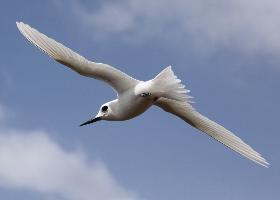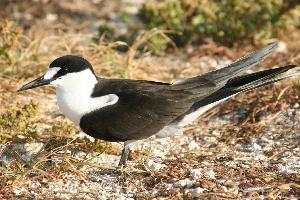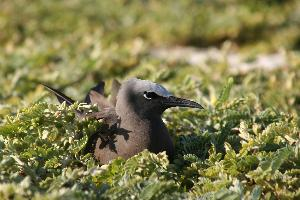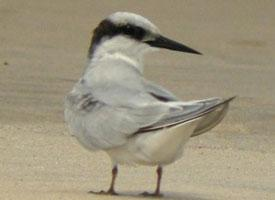
Stav ohrožení
| Ohrožen |
Popis zvířete
The Fairy Tern, scientifically known as Sternula nereis, is a small, enchanting seabird that captivates the attention of bird enthusiasts and nature lovers alike. This delicate bird is a part of the Laridae family, which encompasses gulls and terns. Fairy Terns are primarily found in the coastal regions of the southern hemisphere, with their range extending across parts of Australia, New Zealand, and some islands in the South Pacific.Characterized by its dainty and graceful appearance, the Fairy Tern possesses a slender body that is predominantly white, providing it with an almost ethereal quality. The bird's back and wings display a pale grey hue, while its underparts are pure white, creating a striking contrast. One of the most distinctive features of the Fairy Tern is its bill, which is sharp, pointed, and exhibits a vibrant yellow or orange color, depending on the subspecies. Adding to its charming appearance are its large, dark eyes and relatively long, slender legs that are also brightly colored.
Adult Fairy Terns have a wingspan that ranges between 50 to 55 centimeters, making them one of the smaller tern species. Despite their diminutive size, they are agile and adept flyers, capable of performing intricate maneuvers in the air. Their flight is buoyant and graceful, often seen gliding close to the water's surface in search of food.
The diet of the Fairy Tern primarily consists of small fish and invertebrates, which they catch with remarkable precision. They employ a hunting technique known as "hovering," where they fly over the water, spotting their prey before diving swiftly to capture it. This hunting method showcases their incredible agility and accuracy.
Breeding season brings out more of the Fairy Tern's intriguing behaviors. They are monogamous birds, forming pairs that share the responsibility of building nests, incubating eggs, and feeding the chicks. Nests are typically constructed on the ground in sandy or rocky areas, often with little to no material, which unfortunately makes their eggs and chicks vulnerable to predation and environmental factors. The Fairy Tern lays one to two eggs per breeding season, and both parents are actively involved in the nurturing process.
Conservation efforts are crucial for the Fairy Tern, as their populations face threats from habitat destruction, predation by introduced species, and human disturbances. Some subspecies are considered endangered and are subject to conservation measures aimed at protecting their habitats and ensuring their survival.
The Fairy Tern is not just a bird; it is a symbol of the delicate balance of coastal ecosystems. Its presence indicates healthy marine environments, making its conservation essential for biodiversity. Observing these birds in their natural habitat is a reminder of nature's fragility and beauty, urging us to protect and preserve the natural world for future generations.
Podobná zvířata
Nové fotografie zvířat
Top 10 zvířat
- Chinese water dragon (Physignathus cocincinus)
- Galápagos tortoise (Geochelone nigra complex)
- Dolphin gull (Leucophaeus scoresbii)
- Japanese macaque (Macaca fuscata)
- Colombian red howler (Alouatta seniculus)
- Sea urchins (Echinoidea)
- Moustached guenon (Cercopithecus cephus)
- Diana monkey (Cercopithecus diana)
- Common reed warbler (Acrocephalus scirpaceus)
- Common house mosquito (Culex pipiens)


